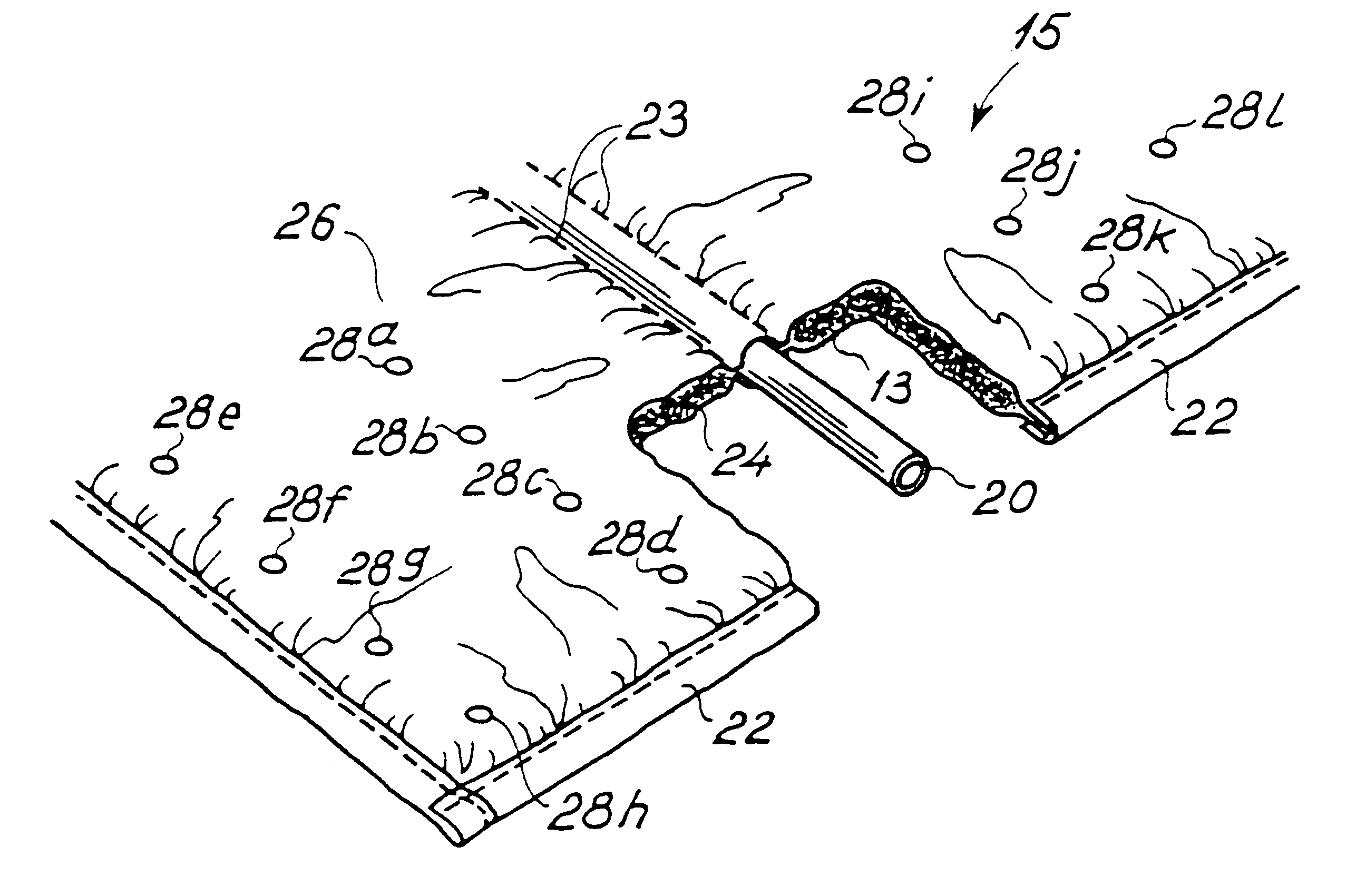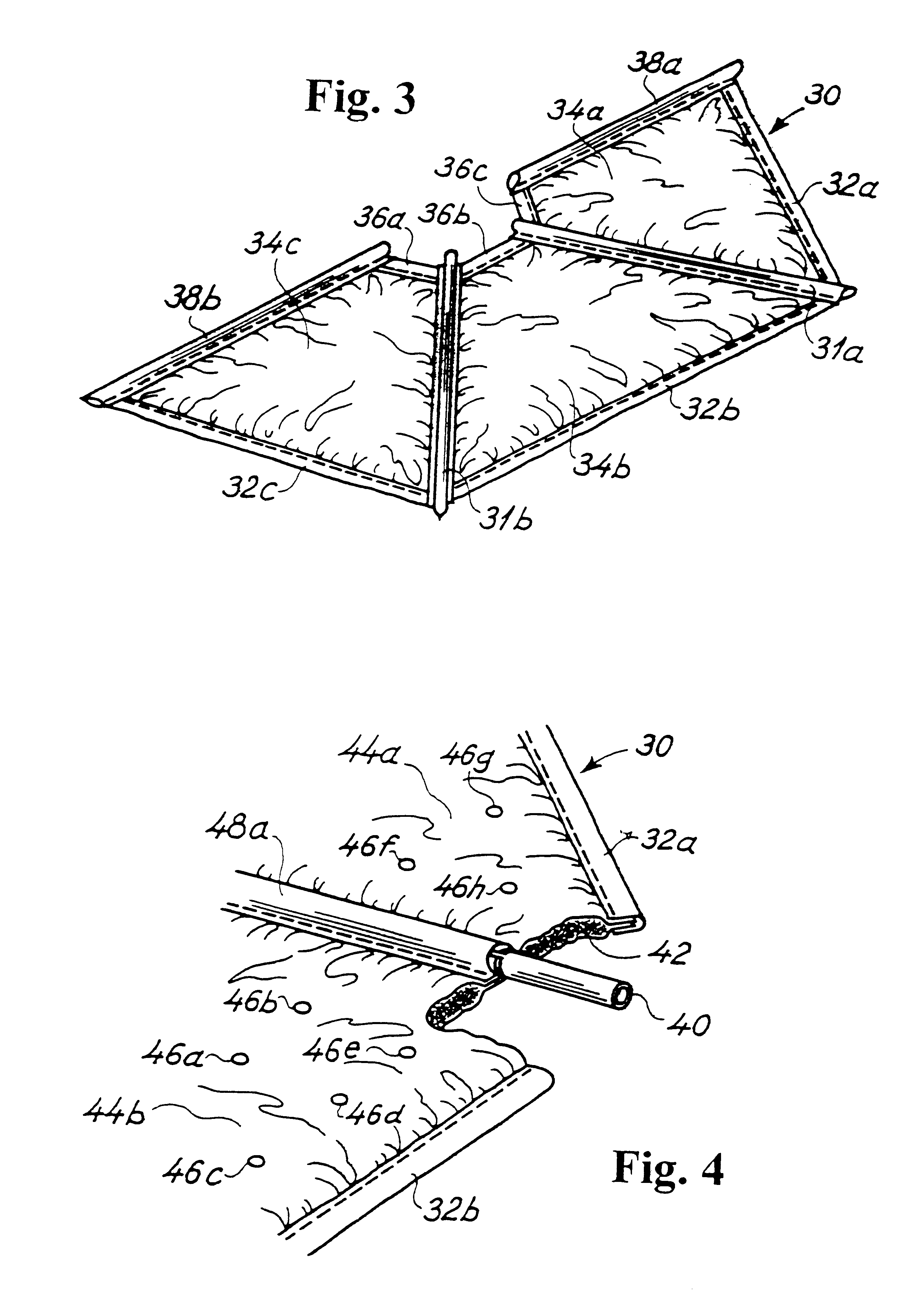Insulating cover
a technology of insulating cover and cover plate, which is applied in the field of insulating cover, can solve the problems of reducing the overall insulating effect of the cover plate,
- Summary
- Abstract
- Description
- Claims
- Application Information
AI Technical Summary
Benefits of technology
Problems solved by technology
Method used
Image
Examples
Embodiment Construction
The preferred embodiment of the cover according to the present invention described above with reference to FIGS. 1 and 2, was made as follows.
The rectangular insulating cover 15 had the overall dimensions: length 1250 mm, width 910 mm, average thickness 5 mm, with 2 supporting tubular elements each having a diameter of approximately 10 mm and separated by a distance of 600 mm. The first supporting tubular 20 element placed at a distance of 325 mm from one edge of the insulating cover parallel to the axis of the supporting tubular elements and the second supporting tubular 20 element placed at a distance of 925 mm from said edge. The supporting tubular elements 20 were fixed using through-stitches 23 separated by 25 mm.
The outer foil was impermeable and made of the material PE and had an average thickness of 120 .mu.m. The inner foil was impermeable and made of the same materials as the outer foil and also had an average thickness of 120 .mu.m. The inner foil was perforated with hole...
PUM
| Property | Measurement | Unit |
|---|---|---|
| thickness | aaaaa | aaaaa |
| thickness | aaaaa | aaaaa |
| areas | aaaaa | aaaaa |
Abstract
Description
Claims
Application Information
 Login to View More
Login to View More - R&D
- Intellectual Property
- Life Sciences
- Materials
- Tech Scout
- Unparalleled Data Quality
- Higher Quality Content
- 60% Fewer Hallucinations
Browse by: Latest US Patents, China's latest patents, Technical Efficacy Thesaurus, Application Domain, Technology Topic, Popular Technical Reports.
© 2025 PatSnap. All rights reserved.Legal|Privacy policy|Modern Slavery Act Transparency Statement|Sitemap|About US| Contact US: help@patsnap.com



